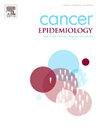Unveiling the shifting trends and landscape of dietary-related cancer burden in China, global and different income regions: Based on GBD2021
IF 2.3
3区 医学
Q3 ONCOLOGY
引用次数: 0
Abstract
Background
This study assessed the burden of dietary risk-attributed cancers (DRAC) in China from 1990 to 2021, comparing trends with global patterns and across sociodemographic index (SDI) regions. We further projected future trajectories up to 2036.
Methods
The study assesses DRAC using age-standardized disability-adjusted life-years rates (ASDR) and age-standardized mortality rates (ASMR) based on Global Burden of Disease 2021. Temporal trends were evaluated using annual percentage change (APC) and estimated annual percentage change (EAPC). Key drivers were identified through decomposition and age-period-cohort analyses, while future trends were projected using a Bayesian age-period-cohort model.
Results
From 1990 to 2021, most countries exhibited negative EAPC values for overall population ASDR and ASMR, especially in China (-2.9; − 2.7). However, since approximately 2013, APC values for ASDR and ASMR among younger adults (under 55 years) in China and middle SDI regions have been positive. As for sexes, the ASDR and ASMR for DRAC were consistently higher in males than in females across China. Specifically, a diet rich in red meat and diet deficient in whole grains posed the highest dietary cancer risk for females and males respectively. Projections suggest that by 2036, China's ASDR and ASMR for DRAC may decrease to about 200 and 8, while global figures could drop to about 180 and 7 per 100,000.
Conclusions
Although China’s overall DRAC burden declined particularly fast on a global scale from 1990 to 2021, projections indicate it will remain above the global average by 2036. Notably, since 2013, both China and middle SDI regions have witnessed a rising burden of dietary risk-attributed cancers among young adults. Distinct burden profiles and risk factor distributions have been observed between genders. Targeted public health policies tailored to age, sex, and leading dietary risks should be formulated and implemented in the future.
揭示中国、全球和不同收入地区饮食相关癌症负担的变化趋势和格局:基于GBD2021
本研究评估了1990年至2021年中国饮食风险归因于癌症(DRAC)的负担,并将趋势与全球模式和跨社会人口指数(SDI)区域进行了比较。我们进一步预测了到2036年的未来轨迹。方法采用基于2021年全球疾病负担的年龄标准化残疾调整生命年率(ASDR)和年龄标准化死亡率(ASMR)对DRAC进行评估。采用年变化百分比(APC)和估计年变化百分比(EAPC)评价时间趋势。通过分解和年龄-时期-队列分析确定了关键驱动因素,同时使用贝叶斯年龄-时期-队列模型预测了未来趋势。结果从1990年到2021年,大多数国家的总体人口ASDR和ASMR的EAPC值为负,特别是在中国(-2.9和- 2.7)。然而,大约自2013年以来,中国和SDI中部地区年轻人(55岁以下)的ASDR和ASMR的APC值一直为正值。在性别方面,中国男性DRAC的ASDR和ASMR始终高于女性。具体来说,富含红肉的饮食和缺乏全谷物的饮食分别对女性和男性造成了最高的饮食癌症风险。预测显示,到2036年,中国的ASDR和DRAC的ASMR可能降至200和8左右,而全球数字可能降至180和7 / 10万左右。尽管从1990年到2021年,中国在全球范围内的DRAC总体负担下降得特别快,但预测表明,到2036年,中国的DRAC负担仍将高于全球平均水平。值得注意的是,自2013年以来,中国和SDI中部地区的年轻人因饮食风险导致的癌症负担不断上升。已观察到不同性别之间的不同负担概况和风险因素分布。未来应制定和实施针对年龄、性别和主要饮食风险的有针对性的公共卫生政策。
本文章由计算机程序翻译,如有差异,请以英文原文为准。
求助全文
约1分钟内获得全文
求助全文
来源期刊

Cancer Epidemiology
医学-肿瘤学
CiteScore
4.50
自引率
3.80%
发文量
200
审稿时长
39 days
期刊介绍:
Cancer Epidemiology is dedicated to increasing understanding about cancer causes, prevention and control. The scope of the journal embraces all aspects of cancer epidemiology including:
• Descriptive epidemiology
• Studies of risk factors for disease initiation, development and prognosis
• Screening and early detection
• Prevention and control
• Methodological issues
The journal publishes original research articles (full length and short reports), systematic reviews and meta-analyses, editorials, commentaries and letters to the editor commenting on previously published research.
 求助内容:
求助内容: 应助结果提醒方式:
应助结果提醒方式:


